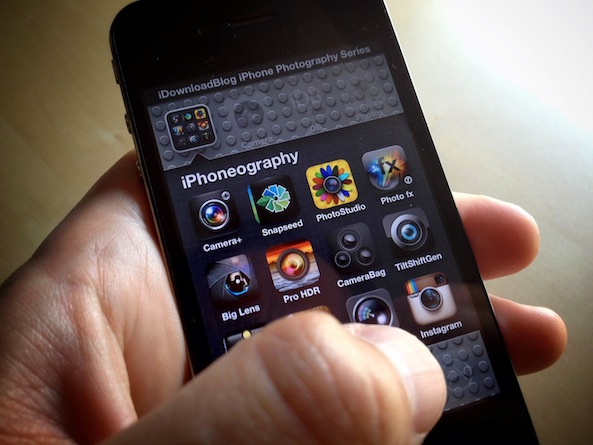Taking a picture with the iPhone is easy. All you do is touch the little camera icon and voila, you instantly have a photo you can share with the world. There is nothing wrong with the spontaneous snap. However, in today’s lesson we are going to explore a technique that allows you to flex your creative muscle.
Before we get into the lesson, there are a couple of terms we need to cover first. They are “exposure”, “highlights”, and “shadows”…
Exposure
In very simple terms, exposure determines how bright or dark your image is. When you take a photograph with your iPhone, or any camera for that matter, it is going to control how much light actually gets in through the lens to be recorded on the sensor. If a lot of light gets in through the lens the image will be bright, if less light gets in, the image will be dark. Most of the time, if the light in the scene is fairly evenly distributed, meaning there aren’t really bright or dark areas, you will get a nice balanced exposure. Here is an example of an evenly lit scene that produces an evenly exposed image.
However, in high contrast scenes, where you have a wide range of bright light and dark shadows, you will have a difficult time getting a single image to be properly exposed for the bright and dark areas. Your iPhone’s camera sensor has a limited range of light that it can manage. In situations like this, you as the photographer will have to make a creative exposure decision. Which brings us to our next terms.
Highlights and Shadows
Highlights (or highlight detail) is the information contained in the very brightest areas of the scene. If you set your exposure for the bright area, so that you can see the details in it, you will consequently lose the ability to see details in the shadow areas.
Shadows (or shadow detail) is the information contained in the darkest areas of a scene. If you set your exposure so that you can see details in the shadows, you will lose the ability to see details in the bright areas. This is just something we as photographers have to live with. Don’t think of it as a limitation, think of it as a creative advantage.
In this image, I exposed for the outside light (highlight detail) which allowed me to properly expose the details in the bright outdoor scene. As you can see, the interior of the room remained pretty dark.
In this image, I exposed for interior of the room (shadow detail) which allowed me to bring out more details around the window at the cost of losing all the details outside.
Setting Your iPhone’s Exposure
Now that we have a basic understanding of exposure, how do we control it with our iPhone? The answer is simple: you touch on different areas of your iPhone’s screen to control where your iPhone will meter the scene to determine what its exposure should be. If you touch a bright area, you will notice the image becomes darker. Vice versa, if you’re touching a darker area, the scene becomes brighter.
In this image, the exposure has been set for the shadow areas and we have lost the highlight detail in the brightest areas of scene. In this case, the sky.
As we instruct our iPhone to expose for the brighter area of the scene, we are now able to see the details in the sky but we have lost most of our shadow details.
Your Assignment
Your assignment this week is to go out an make creative exposure decisions. What you will need to do is find scenes that are high in contrast and set your exposure for either the highlights or the shadows. Make sure to share your photos on Instagram and tag them with #iDBCreativeExposure so we can all see them. I will be working right along side you so feel free to follow me on Instagram @justinbalog.
For our next adventure into the world of iPhone Photography, we will be exploring the more advanced techniques of focus, exposure, and white balance as well as ways to use them to your creative advantage! See you in two weeks!
Justin Balog is an award winning photographer and filmmaker. You can follow is daily creative adventures at HOSSedia.com or learn more about iPhone Photography in his iBook ‘Big World Little Lens‘.

